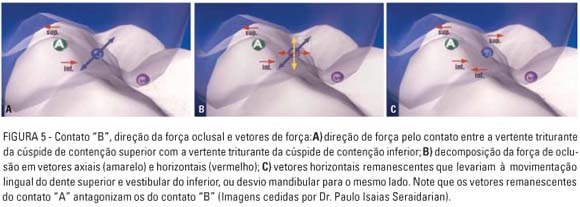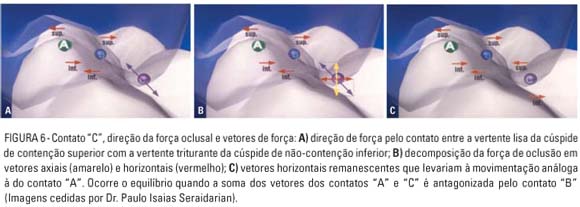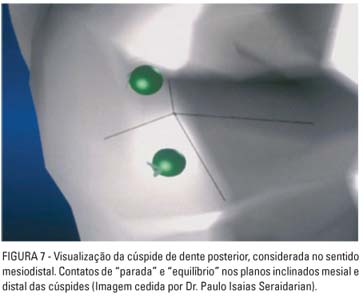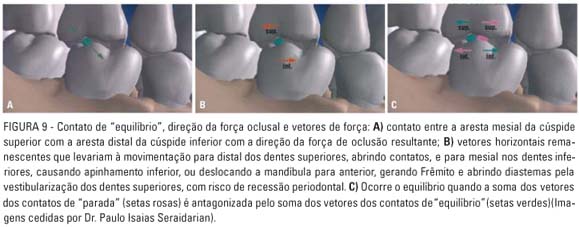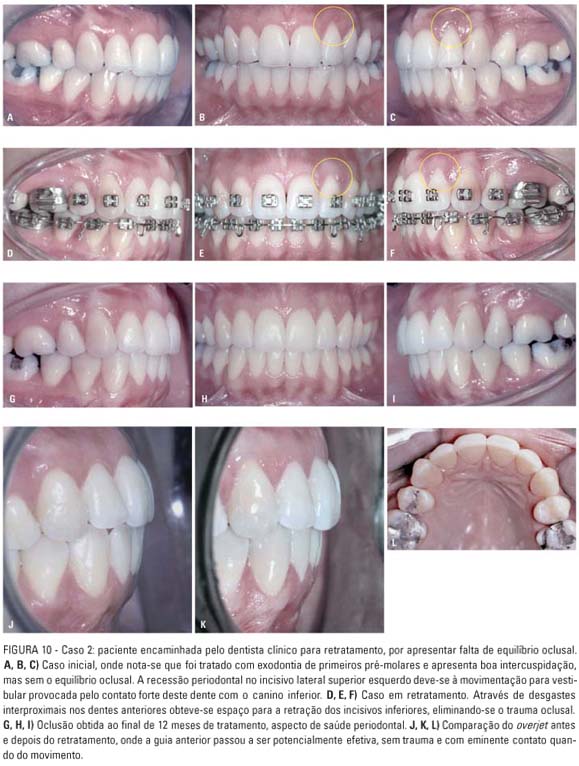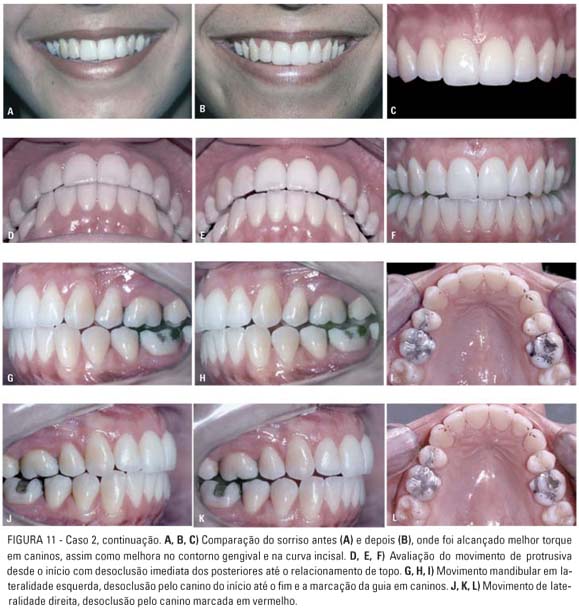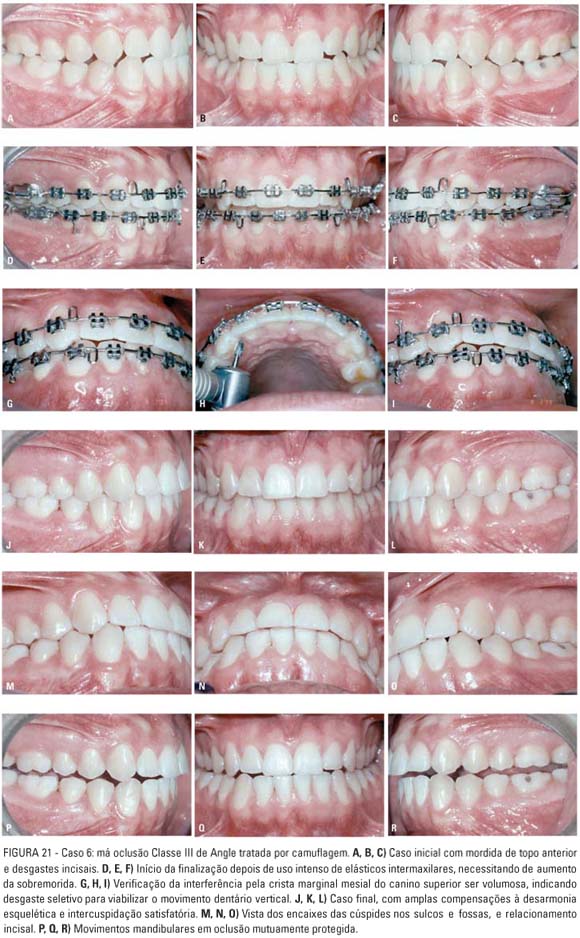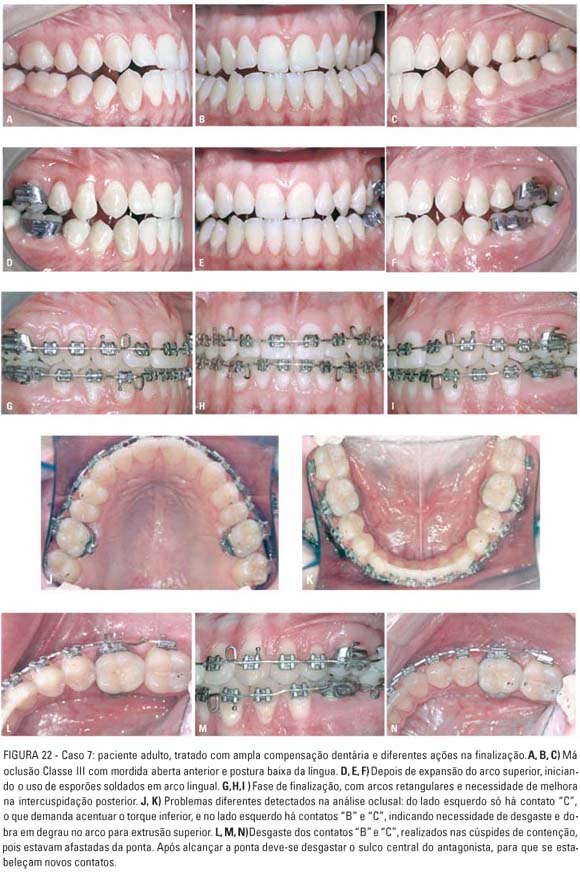INTRODUCTION: The knowledge of dental occlusion should be considered the basic foundation to an excellent orthodontic practice. The patient’s diagnose without the centric relation assessment can take the orthodontist to an unpleasant surprises. The use of rectangular archwires requires occlusal contacts been checked to decide what kind of the dental movement will be necessary to achieve the dental equilibrium and mainly to investigate if the movement will be possible. Considering the occlusal surfaces complexity, the occlusal adjustment by selective grinding should be performed during the orthodontic treatment to allow vertical dental movements reducing treatment’s time. Occlusal interferences are responsible not only for biomechanics adverse effects, producing undesirable dental movements, but also for potential side effects such as excessive forces (occlusal trauma), leading to roots reabsorption. The occlusal adjustment is a determinant point on dental balance after the end of orthodontics treatments, where each posterior occlusal tooth contacts "A" and "B", or "B" and "C" on buccolingual aspect, as well as the stoppers and equalizers contacts on mesiodistal direction must be achieved and well established. The appropriate role of anterior teeth in mandibular movements must be determined, allowing immediate disclusion of posterior teeth, known as anterior guide, and promoting protecting muscle forces to the stomatognathic system. Selective grinding should not be used in place of well planned and executed orthodontic movement. AIM: The aim of this article is to present the rationale use of occlusal adjustment in Orthodontics.
Occlusal adjustment; Orthodontic; Selective grinding; Occlusal equilibrium; Dental stability





